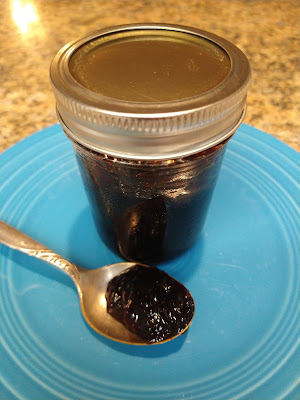
Recipe: Tutti frutti summer conserve is versatile condiment

|
“Conserve” lives up to its name. This age-old technique makes the most of summer’s sweet odds and ends, creating a jammy condiment as versatile and varied as its ingredients.
Tutti frutti – or “all fruits” – combines an array of summer favorites – fresh or frozen. For this batch, I used fresh peaches, Bing cherries and frozen Italian purple plums (remaining from last year’s crop).
By tradition, conserve uses at least two kinds of fruit, cooked with sugar. A green apple provides any necessary pectin. Raisins and, if desired, nuts are added to the mixture along with orange zest and juice. The nuts provide texture to go along with the sweet-tart fruit.
If used, wine smooths out the fruit flavors and also helps meld the colors. Red wine intensifies the purple.
Some conserves are intentionally chunky and best used as a dessert topping or alongside grilled or roast meats. Ingredients in this conserve are finely chopped, allowing the fruit mixture and raisins to cook down into an almost smooth jam. That consistency also works on desserts or next to meats, but is just at home on toast, bread or crackers. Team it with brie for an easy appetizer, too.
 |
|
The conserve can be frozen or water-bath
canned for later enjoyment.
|
Tutti frutti summer conserve
Makes about 3 half-pints (3 cups)
Ingredients:
Comments
0 comments have been posted.Sacramento Digs Gardening to your inbox.
Sites We Like
Garden Checklist for week of July 21
Your garden needs you!
* Keep your vegetable garden watered, mulched and weeded. Water before 8 a.m. to reduce the chance of fungal infection and to conserve moisture.
* Feed vegetable plants bone meal, rock phosphate or other fertilizers high in phosphate to stimulate more blooms and fruiting. (But wait until daily high temperatures drop out of the 100s.)
* Don’t let tomatoes wilt or dry out completely. Give tomatoes a deep watering two to three times a week.
* Harvest vegetables promptly to encourage plants to produce more. Squash especially tends to grow rapidly in hot weather. Keep an eye on zucchini.
* Pinch back chrysanthemums for bushy plants and more flowers in September.
* Remove spent flowers from roses, daylilies and other bloomers as they finish flowering.
* Pinch off blooms from basil so the plant will grow more leaves.
* Cut back lavender after flowering to promote a second bloom.
* It's not too late to add a splash of color. Plant petunias, snapdragons, zinnias and marigolds.
* From seed, plant corn, pumpkins, radishes, winter squash and sunflowers.